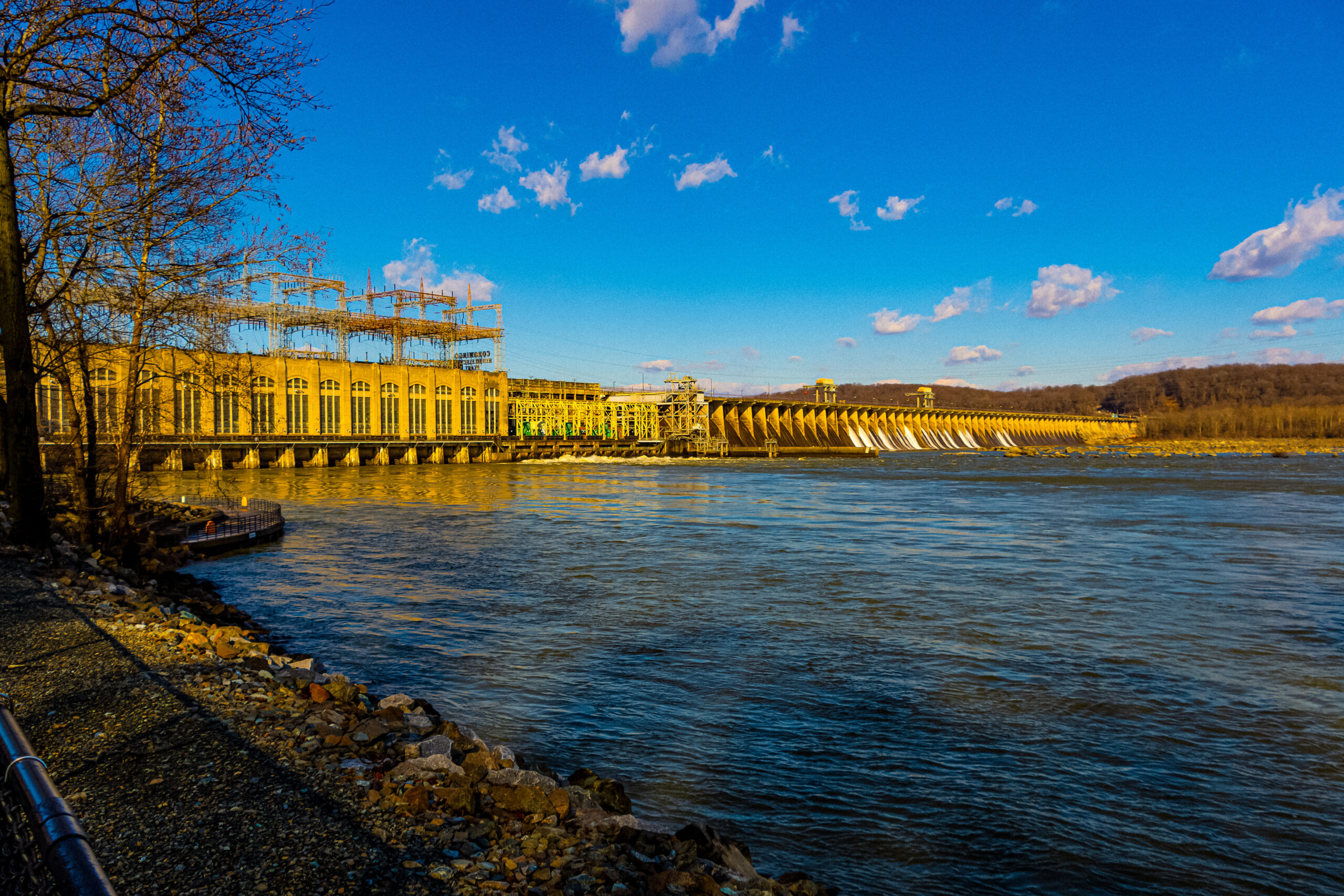By Josh Kurtz June 2, 2023
Maryland environmental officials are restarting a controversial permitting process that would eventually enable Constellation Energy to continue operating the Conowingo Dam for another half century.
The future of the dam along the Susquehanna River, considered a significant source of Chesapeake Bay pollution, has been the object of regulatory wrangling and litigation for several years.
In December, a federal appeals court vacated a decision by the Federal Energy Regulatory Commission (FERC) to grant Constellation a license to keep generating hydroelectric power at the dam.
The judges in the U.S. Court of Appeals for the D.C. Circuit ruled that FERC had violated the federal Clean Water Act in giving the permit, after the state of Maryland and Constellation scrapped a water quality certification process they had originally agreed to. That agreement between the state and Constellation prompted a coalition of environmental groups, led by Waterkeepers Chesapeake and the Lower Susquehanna Riverkeeper, to sue; the court agreed with them that FERC “had no authority to issue a lease based on a private settlement arrangement” between the state and the national energy giant.
The court ordered that FERC merely grant Constellation an annual license for Conowingo Dam until the legal and procedural issues can be resolved.
On Thursday evening, officials at the Maryland Department of the Environment notified Constellation and the environmental groups that launched the lawsuits that the agency would renew the process for awarding Constellation a water quality permit. That permit, which was originally issued in 2018, is necessary for FERC to grant the 50-year license to Constellation to continue generating hydropower at the dam.
In a letter from MDE Assistant Secretary Roberta James to attorneys representing the parties in the lawsuit, the state said it was giving Constellation and the environmental groups 60 days to respond, offering them “the opportunity to supplement that information [from the 2018 review process] by providing any new, updated, and relevant information which the parties would like the Department to review.”
Separately, Maryland Matters has learned that MDE is also opening a 30-day comment period for members of the public to express their views about water quality issues at the dam in writing. The agency would then begin to assemble the feedback from the public and the parties in the lawsuit in August and would issue a renewed permit, with potentially different standards and guidelines from the original permit, at an undetermined date.
“Ensuring a revitalized Chesapeake Bay for the benefit of all Marylanders is a top priority,” Maryland Environment Secretary Serena McIlwain said in a statement. “As we move ahead with the reconsideration of the 2018 Water Quality Certification we will be transparent, we will welcome input and we will work collegially with all parties for a healthier and more vibrant Bay.”
Conowingo Dam is a major regional energy installation, but it also plays an important role in the health of the Chesapeake Bay. It is designed in part to catch much of the sediment and nutrient pollution that comes from upriver in Pennsylvania, which, according to federal and regional environmental regulators, is the source of much of the agricultural pollution that in the bay.
However, powerful storms can tax the dam’s capacity, pouring millions of pounds of pollution into the Susquehanna and the Chesapeake — potentially jeopardizing Maryland’s attempts to meet the federal government’s pollution reduction goals for the bay.
Two months ago, all 10 members of Maryland’s congressional delegation wrote to McIlwain, urging her to ensure that environmental protection measures for the Susquehanna River and Chesapeake Bay watershed are central to any new licensing agreement that FERC would consider for the dam.
“As you know, the Chesapeake Bay is both a national treasure and an economic engine for our region, and for decades the federal government and watershed states have worked together to clean up this vital resource,” the lawmakers wrote.
Read article here

